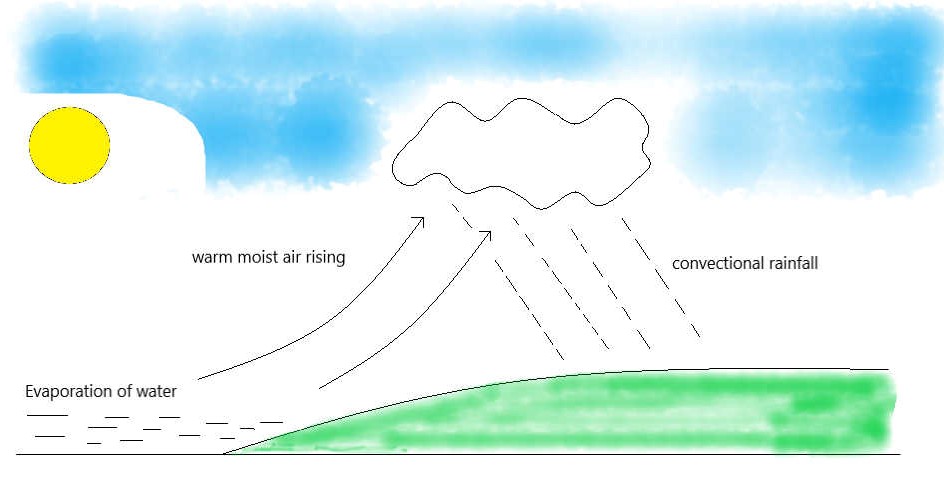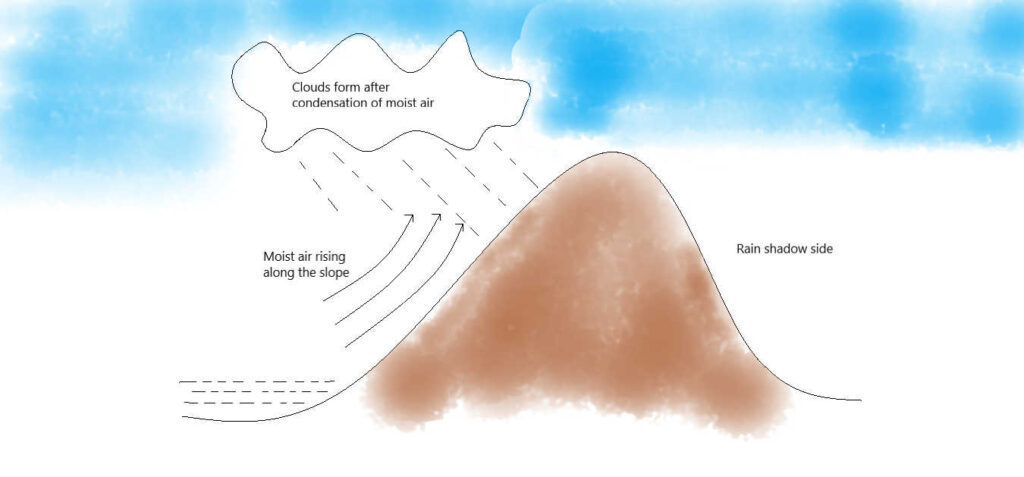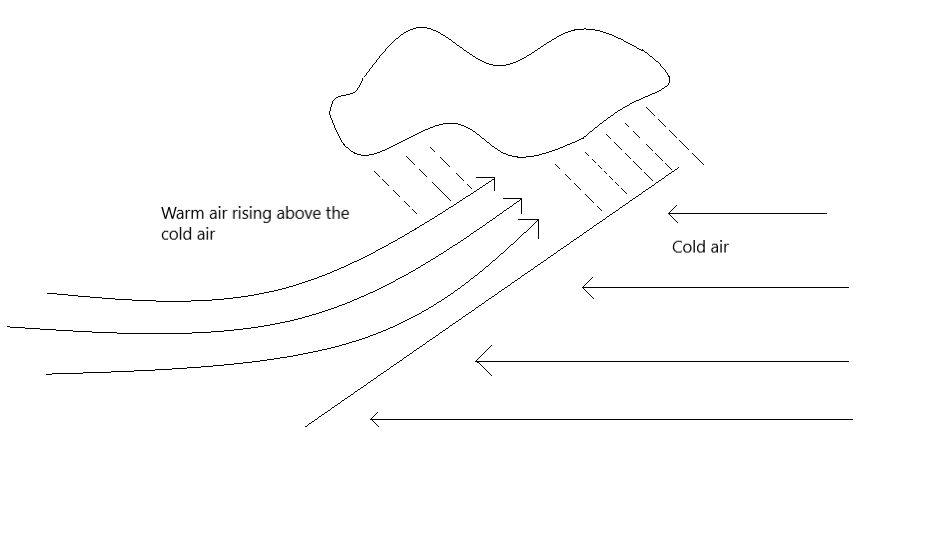Rainfall occurs when the condensed water vapor from the clouds falls on Earth in the form of droplets. There are 3 major types of rainfall.
- Convectional rainfall
- Orographic or relief rainfall
- Cyclonic or frontal rainfall

Types of rainfall
Convectional Rainfall

- When the sun heats the Earth’s surface, the water evaporates to form water vapor.
- The warm moist air then rises in a convective current. As the air rises, it cools and the water vapor condenses to form clouds.
- The clouds grow and eventually rainfall occurs as the weight of condensed water increases.
- The rainfall is often accompanied by thunder and lightning.
- Convectional rainfall in common in tropical regions while in temperate regions, it occurs mainly during the summers.
Orographic or relief rainfall

- When a warm moist air current approaches a mountain, it rises up the slope and cools, consequently forming clouds.
- These clouds bring rain, most of which falls on the ridge facing the air current (Windward side).
- On the leeward side, the rainfall is very less.
- The area on the leeward side is also known as the rain shadow area.
Cyclonic or frontal rainfall

- It occurs when two air masses with different temperatures collide.
- The colder air mass being denser stays closer to the surface while the warmer air mass rises above it.
- As the warm air rises it cools and condenses to form clouds which bring rain thereafter.
Read more
Nice explanation with illustrations. Please make more of this type of educational materials & post them. Appreciate your efforts wholeheartedly.
Thank You 🙂
Thank you this was helpful